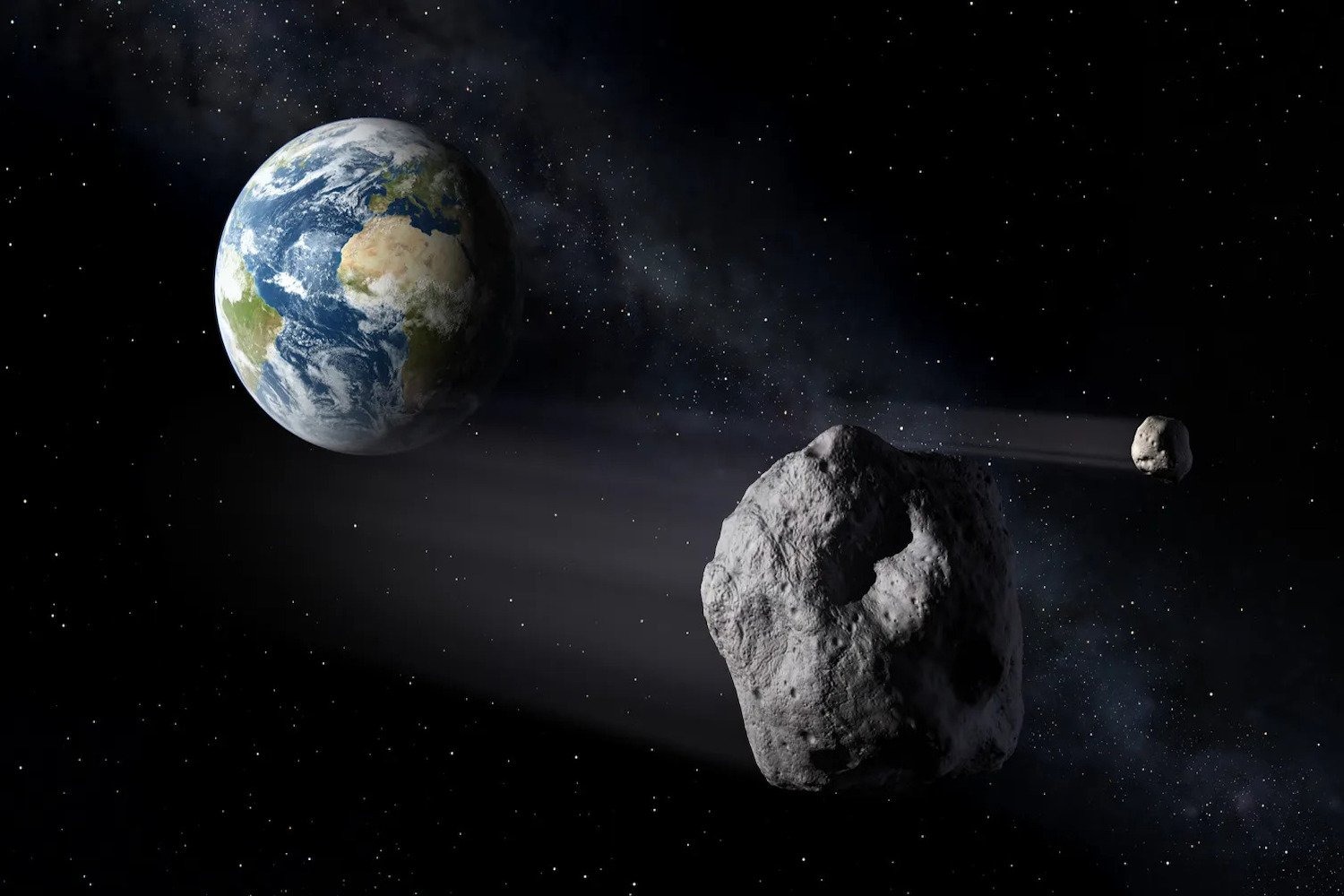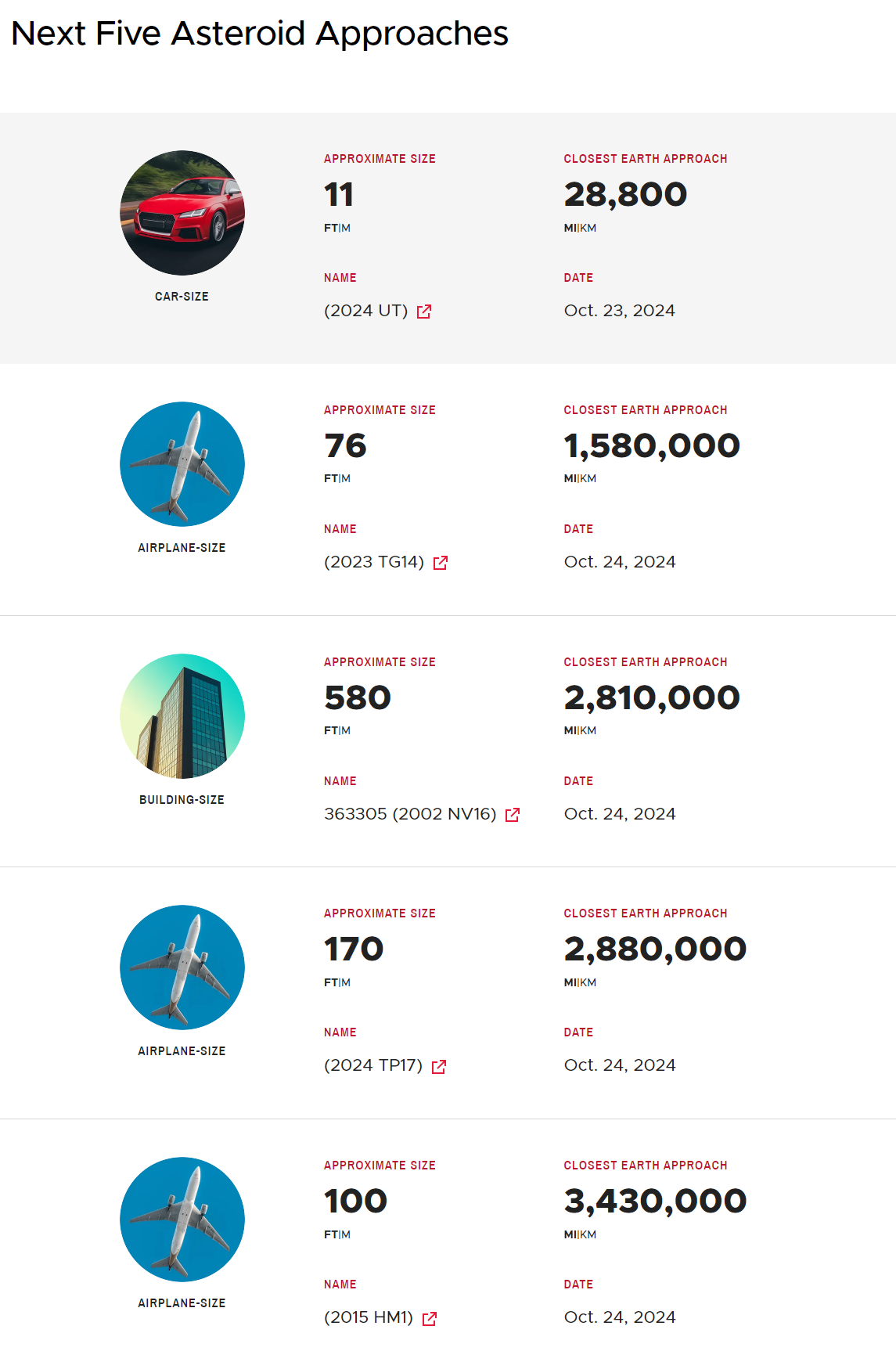On October 24, five asteroids will approach the Earth, but there is no cause for concern – none of them carries a threat of falling and destroying our civilization. Only one of these objects is classified as potentially dangerous, but even it will pass at a safe distance.

Potentially dangerous asteroids are space bodies that can approach Earth at a distance of less than 0.05 astronomical units, which is about 7.5 million kilometers, or 19 times farther than the Moon. In addition, such asteroids should have an absolute stellar magnitude of 22 or less, which corresponds to a diameter of about 140 meters.
The main object of the day is NV16, discovered in 2022. Its absolute stellar magnitude is 21.4, marking a diameter of about 177 meters. It is not large enough to destroy a planet, but could severely damage a city in the case of collision. However, there is no reason to worry: on October 24, NV16 will pass at a distance of 4.5 million km from the Earth, and the next time it will approach only in 2031, being even farther away – about 6.4 million km.

Asteroid occurrence times are distributed throughout the day:
- NV16 will reach its closest point at around 15:47 p.m. UTC (11:47 a.m. EDT).
- TR6 (46 m) will fly past Earth a few minutes after NV16, keeping at a distance of 5.6 million km.
- HM1 (30 m) will approach a minimum distance of 5.5 million kilometers at around 4:36 a.m. UTC (0:36 a.m. EDT).
- TP17 (52 m), discovered on October 12, will pass 4.6 million km from Earth.
- The last one will be TG14 (23m), which will fly at a distance of 2.5 million kilometers in the evening.
None of these objects threaten our planet. Asteroids, as cosmic neighbors, are just a reminder of the complexity and vastness of our Solar System. Live in peace – they will fly by without causing any harm.
Earlier we told you how to divert a dangerous asteroid away from Earth.
Provided by NASA


